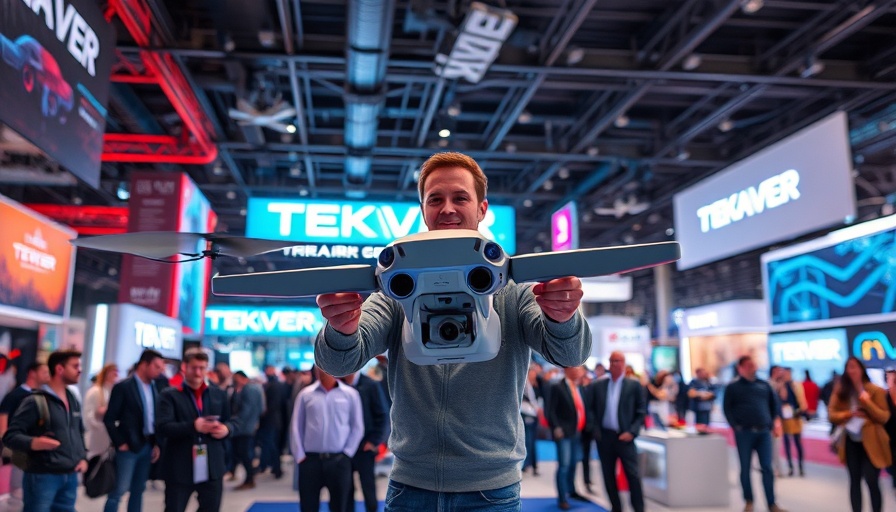
Unleashing Potential: The AR3 EVO's Modular Revolution
At the recent DSEI 2025 conference, TEKEVER unveiled its upgraded AR3 EVO, drawing attention not only for its enhanced features but also for its groundbreaking modularity. This UAS (uncrewed aerial system) represents a significant evolution in defense technology, as explained by TEKEVER's CEO, Ricardo Mendes, who championed a design philosophy that favors flexibility. "It's like Lego really," Mendes stated, highlighting how users can adapt their systems according to mission needs.
Design Philosophy: More Than Just Payload
Traditionally, when discussing modular systems, the focus is often primarily on payload capabilities. TEKEVER challenges this notion by emphasizing four critical variables essential for a robust modular system: sensors, communications, deployment methods, and propulsion. Mendes argues that, in high-intensity warfare, a single adaptable system is far more advantageous than juggling multiple systems for different missions. This thinking is especially pertinent in today’s geopolitical climate.
The Changing Landscape of Defense Production
The backdrop of the AR3 EVO's launch is a concerning rise in European rearmament, driven by perceived threats from Russia. This has ushered in escalating demands for military resources, with governments stressing the necessity of scalable and resilient production capabilities. TEKEVER sees its fully modular platforms as vital to meet these emerging needs, offering a unified solution to combat variability in warfare scenarios.
Performance Enhancements: A Closer Look at the Specifications
The AR3 EVO boasts impressive enhancements over its predecessor. With a 50% increase in payload capacity along with a 15% boost in fuel efficiency, the platform achieves remarkable operational capabilities. The unit can now fly for up to 20 hours in its fixed-wing configuration and 16 hours when adapted for vertical takeoff and landing (VTOL). Additionally, the weight reduction of four kilograms contributes to a lower radar and acoustic signature, making it a stealthier choice for missions.
What This Means for Military Strategy
As the defense sector grapples with evolving threats, TEKEVER’s innovative approach could redefine military engagements. By offering a solution that alleviates the burden of multiple platforms, the AR3 EVO stands to enhance tactical efficiency on the battlefield. With a single adaptable platform, military forces can remain agile and responsive to fluid operational demands.
Facing Production Challenges in a Competitive Landscape
Despite the excitement surrounding the AR3 EVO, Mendes also cautioned about the inherent challenges in scaling production. Achieving the demand for modular systems like this one necessitates careful planning and investment in manufacturing capabilities. The industry must adapt to these demands if it hopes to keep pace with the rapidly changing defense landscape.
Conclusion: A Call for Strategic Adaptation
As defense technologies continue to evolve, staying informed and engaged with the latest advancements is crucial. TEKEVER’s AR3 EVO and its modular design serve as a telling example of the future of military systems—where flexibility and efficiency will be paramount. For those in the defense sector, now is the time to explore how these changes could impact strategies and operations.
 Add Row
Add Row  Add
Add 




Write A Comment